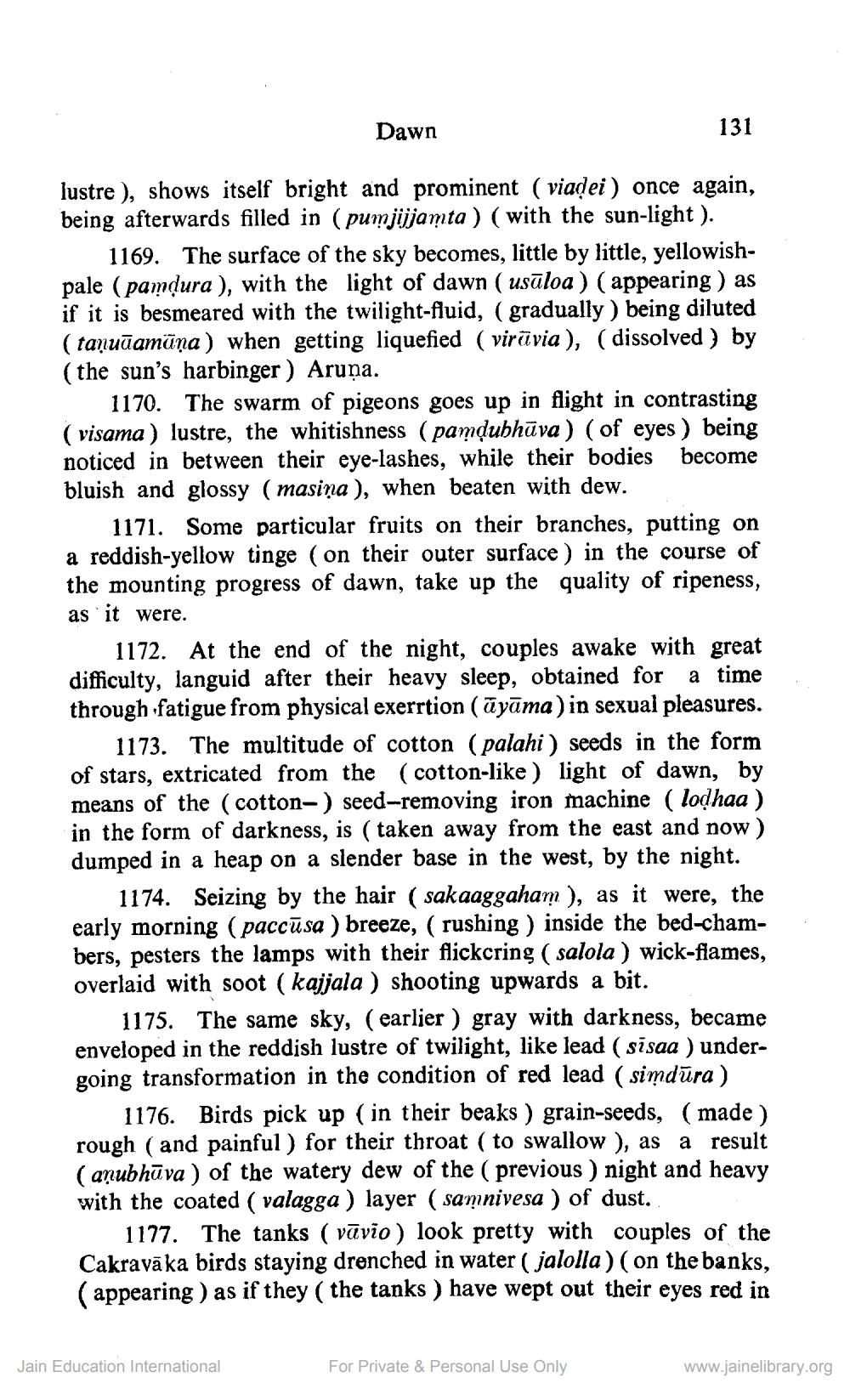________________
Dawn
131
lustre ), shows itself bright and prominent ( viadei) once again, being afterwards filled in (pumjijjamta) (with the sun-light ).
1169. The surface of the sky becomes, little by little, yellowishpale (pamdura ), with the light of dawn ( usāloa ) ( appearing ) as if it is besmeared with the twilight-fluid, (gradually ) being diluted (taņuñamūna) when getting liquefied ( virūvia), (dissolved ) by (the sun's harbinger ) Aruna.
1170. The swarm of pigeons goes up in flight in contrasting ( visama) lustre, the whitishness (pamdubhāva) (of eyes ) being noticed in between their eye-lashes, while their bodies become bluish and glossy (masiņa), when beaten with dew.
1171. Some particular fruits on their branches, putting on a reddish-yellow tinge (on their outer surface ) in the course of the mounting progress of dawn, take up the quality of ripeness, as it were.
1172. At the end of the night, couples awake with great difficulty, languid after their heavy sleep, obtained for a time through fatigue from physical exerrtion (āyāma) in sexual pleasures.
1173. The multitude of cotton (palahi) seeds in the form of stars, extricated from the (cotton-like) light of dawn, by means of the (cotton- ) seed-removing iron machine ( lodhaa ) in the form of darkness, is ( taken away from the east and now) dumped in a heap on a slender base in the west, by the night.
1174. Seizing by the hair ( sakaaggaham ), as it were, the early morning (paccūsa ) breeze, ( rushing ) inside the bed-chambers, pesters the lamps with their flickcring ( salola ) wick-flames, overlaid with soot ( kajjala ) shooting upwards a bit.
1175. The same sky, (earlier ) gray with darkness, became enveloped in the reddish lustre of twilight, like lead (sisaa ) undergoing transformation in the condition of red lead ( simdūra)
1176. Birds pick up (in their beaks ) grain-seeds, (made ) rough (and painful) for their throat ( to swallow ), as a result ( anubhūva ) of the watery dew of the previous ) night and heavy with the coated ( valagga ) layer ( samnivesa ) of dust.
1177. The tanks ( vāvio) look pretty with couples of the Cakravāka birds staying drenched in water ( jalolla) (on the banks, ( appearing ) as if they ( the tanks ) have wept out their eyes red in
Jain Education International
For Private & Personal Use Only
www.jainelibrary.org




